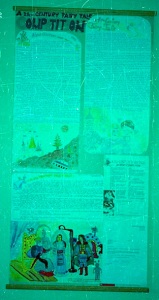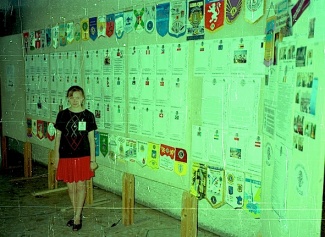After a seven and a quarter hours drive, including a couple of stops, I’m back in the city, Romania’s second largest city (after the capital) in terms of population – Iași. I’m not happy.
Iași is not a bad city as cities go, but I would not choose to stay in it, nor any other, for any length of time in the summer. The things which would attract me, the theatre which is also the opera house and the philharmonic hall with its superb resident orchestra and choir, have no programme in the summer.
Bucovina
The summer is a time to spend in the beautiful countryside of northern Romania, for me the area known as ‘the Bucovina’ – basically the ‘county’ (județ) of Suceava – and the neighbouring ‘county’ of Neamț, where we have just spent a few days. The motivation to visit there was two-fold: to take Petronela’s parents to visit three monasteries in Neamț ‘county’ – Neamț, Agapia and Varatec (my favourite) – and to visit another former pupil from 24 years ago, Paula (see post, post and post).
Highlight of the trip
Paula lives in the beautiful valley of the river Bistrița, so after visiting the three monasteries, staying two nights near Agapia, we continued south to the large lake of Bicaz, then turned up the Bistrița valley to Vatra Dornei, staying a couple of nights in Broșteni and visiting Paula and her family in Borcă. Needless to say, the highlight of the trip for me was the visit to my former pupil, now a teacher of English in Broșteni.
Varatec monastery – my favourite
The Varatec monastery is not one of the famous painted monasteries of the Bucovina; apart from it being a particularly beautiful monastery tended by its resident nuns, not monks, it has fond memories of taking Petronela’s grandmother there for Easter (whatever your faith, or none, the night before Easter Sunday at a monastery is an experience not to be missed if possible).
If you are just having a holiday in Romania there is little reason to stay in a city. None of them other than Bucharest is so large you cannot stay in a bed and breakfast outside the city and go in to visit places of interest, eg the open air museums with their collections of traditional houses or those castles which are within the cities, eg the ‘cetatea’ in Suceava, Bucovina, or the old city within Sighișoara in Transylvania. Even Sibiu has lost its charm for me, the craftsmen and women with their wares around the large central square in the 1990s being completely replaced by bars and restaurants.
Transylvania and the Dracula nonsense
Don’t be misled by the concentration on Transylvania; parts of Transylvania are certainly beautiful but what drags so many tourists there is the myth of Dracula but, for example, Bran castle near Brașov has little if anything to do with the real ‘Dracula’, Vlad Țepeș, who in turn has nothing to do with vampires, and the Dracula hotel at the top of the Tehuța pass between Bistrița and Vatra Dornei is even more of a nonsense.
The decorated monasteries
Of course if you visit Romania I would say ‘a must’ is a visit to the decorated monasteries of the Bucovina but be careful; everything around them and within them is unjustifiably expensive. The most renowned, Voroneț, is not for me the most attractive – I prefer Moldovița or secondly, Sucevița.
Humor monastery
An attempted visit to one of the less renowned, Humor, on our way ‘home’ was abandoned when we saw the entrance price and the levy to take a photograph (I visited it more than once many years ago when there were no charges). Having said that, Humor is one where the external images are best preserved despite being one of the earliest to be decorated. It is also perhaps one of the most interesting (just Google ‘monasteria Humor’ for more details why), but in my opinion that does not justify being ‘ripped off’ (the craft items on the stalls around are also overpriced and the genuine items mixed with a lot of rubbish from maybe China and India). There are no entrance charges or fees to take photographs in the Neamț monasteries.
Bureaucracy – Romanian + EU
Apart from visiting Petronela’s parents in Iași city, we unfortunately need to spend a time here to attempt to complete various ‘administrative’ tasks which can only be completed in a city, in our case only in Iași. Despite Romania being one of the best internet connected countries in Europe, there is little you can do to tackle the formidable bureaucracy on line, made all the worse by Romania now being in the European Union.


















